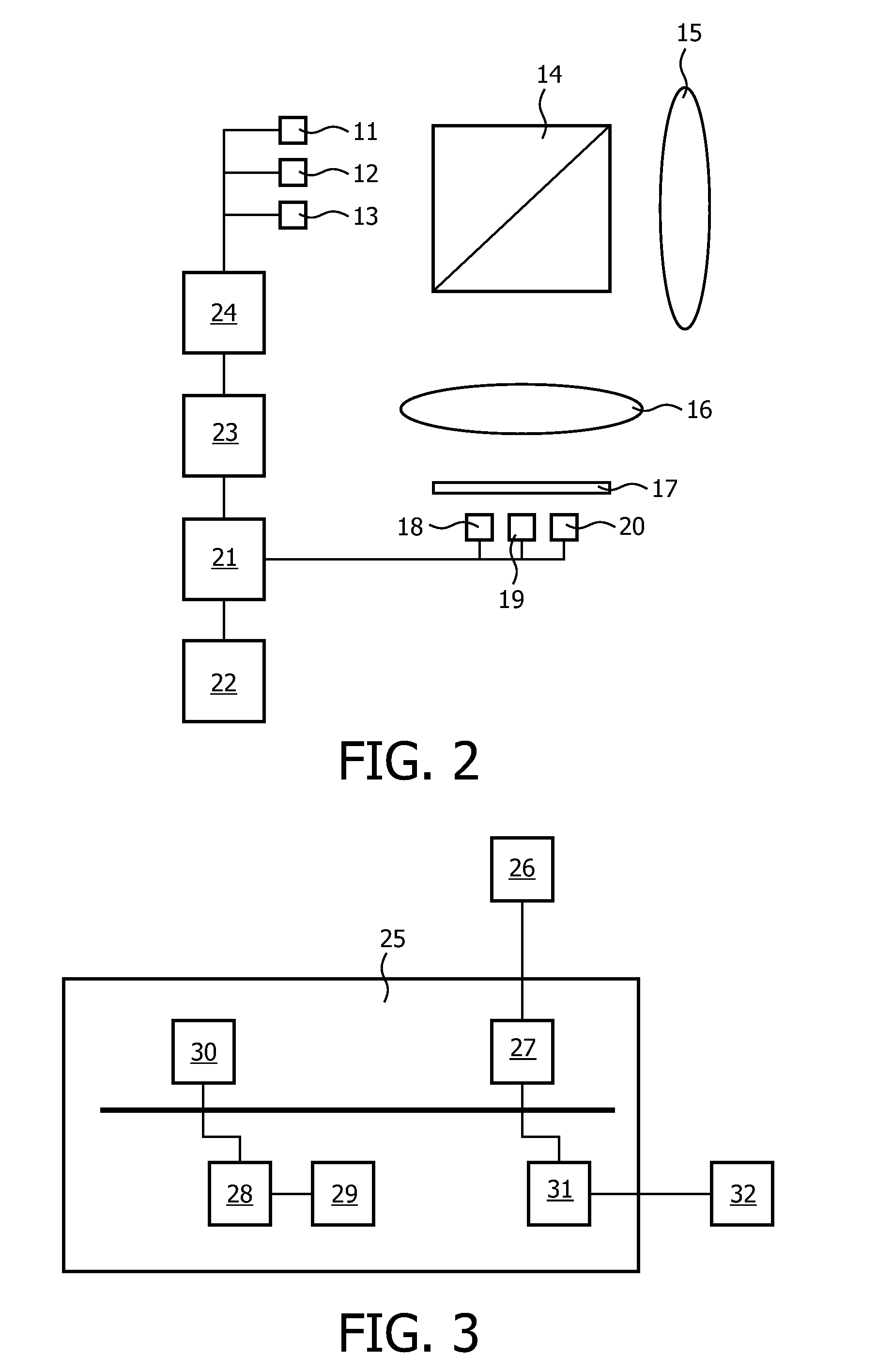Method and system for carrying out photoplethysmography
a technology of photoplethysmography and plethysmography, which is applied in the field of photoplethysmography, can solve the problems of difficult retrieval of the photoplethysmographic signal of interest, and achieve the effect of increasing the likelihood
- Summary
- Abstract
- Description
- Claims
- Application Information
AI Technical Summary
Benefits of technology
Problems solved by technology
Method used
Image
Examples
Embodiment Construction
[0035]Several embodiments of a system for remote photoplethysmography will be explained herein. Photoplethysmography is a method for characterizing certain periodic physiological phenomena using skin reflectance variations. The human skin can be modeled as an object with at least two layers, one of those being the epidermis (a thin surface layer) and the other the dermis (a thicker layer underneath the epidermis). Approximately 5% of an incoming ray of light is reflected in the epidermis, which is the case for all wavelengths and skin colors. The remaining light is scattered and absorbed within the two skin layers in a phenomenon known as body reflectance (described in the Dichromatic Reflection Model). The epidermis behaves like an optical filter, mainly absorbing light. In the dermis, light is both scattered and absorbed. The absorption is dependent on the blood composition, so that the absorption is sensitive to blood flow variations. The optical properties of the dermis are gene...
PUM
 Login to View More
Login to View More Abstract
Description
Claims
Application Information
 Login to View More
Login to View More - R&D
- Intellectual Property
- Life Sciences
- Materials
- Tech Scout
- Unparalleled Data Quality
- Higher Quality Content
- 60% Fewer Hallucinations
Browse by: Latest US Patents, China's latest patents, Technical Efficacy Thesaurus, Application Domain, Technology Topic, Popular Technical Reports.
© 2025 PatSnap. All rights reserved.Legal|Privacy policy|Modern Slavery Act Transparency Statement|Sitemap|About US| Contact US: help@patsnap.com



